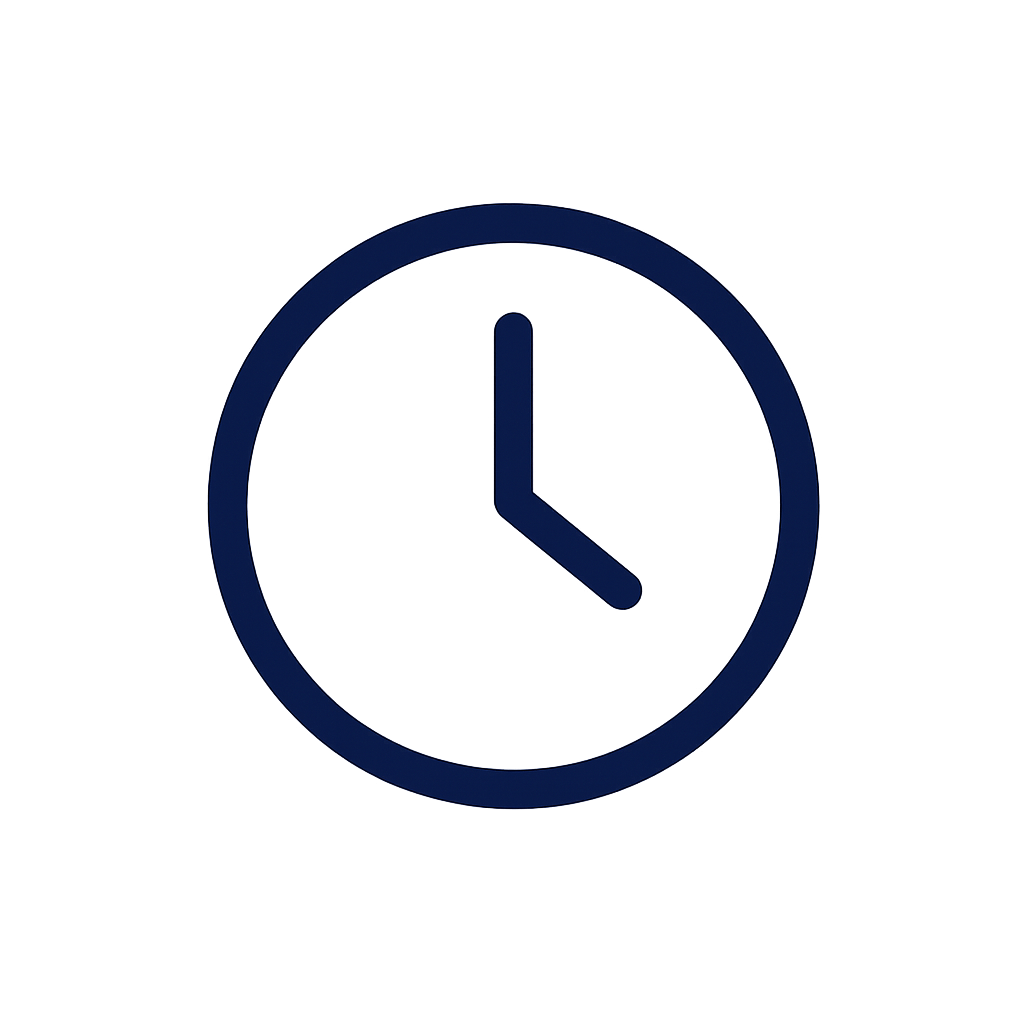Atlas Systems Named a Representative Vendor in 2025 Gartner® Market Guide for TPRM Technology Solutions → Read More
The Best Compliance Tracking Software at a Glance
|
Name |
Best for |
Standout feature |
Pricing |
|
Medium to large enterprises in highly regulated industries such as finance, healthcare, and technology |
An AI-powered risk scoring system that assesses third parties based on multiple factors for a holistic risk view |
Customized pricing |
|
|
AuditBoard |
Large organizations in highly regulated industries that require compliance oversight and robust internal audit programs |
It’s a comprehensive risk platform that offers audit management, risk management, and compliance |
Customized pricing |
|
Vanta |
Startups and SMEs looking to achieve compliance certifications quickly and efficiently |
Automated compliance monitoring, which reduces manual effort by up to 90% |
Customized pricing |
|
Drata |
Companies seeking to achieve and maintain continuous compliance with certifications like GDPR, HIPAA, and PCI DSS |
Ensures ongoing compliance with real-time monitoring and automated evidence collection |
Customized pricing |
|
Hyperproof |
Growing companies that need to manage multiple regulatory frameworks |
Automated compliance monitoring with features like compliance checklists, real-time alerts, and audit trails |
Customized pricing |
|
OneTrust |
Organizations looking to unify privacy, compliance, and risk management operations |
Has multiple features for privacy management to streamline workflows for various privacy regulations |
Customized pricing |
|
LogicGate Risk Cloud |
Companies seeking a customizable risk management solution that doesn’t rely heavily on IT |
The drag-and-drop interface lets users easily build and modify risk and compliance workflows |
Customized pricing |
|
Sprinto |
Cloud-first companies looking to merge their business systems for seamless compliance |
Integrates with over 200 cloud services to automatically monitor controls against security standards |
Customized pricing |
|
PowerDMS |
High-trust organizations and other companies in sectors where accountability and compliance are critical |
Maps documents and certifications to accrediting body standards, helping companies achieve and maintain accreditation |
Customized pricing |
|
SecureFrame |
Startups and businesses can get compliant quickly without hiring consultants |
Accelerates compliance with policy generation, control monitoring, and audit preparation |
Customized pricing |
Top 10 Best Compliance Tracking Tools
1. ComplyScore® by Atlas Systems
ComplyScore® is used by many organizations in highly regulated industries, such as finance, healthcare, and manufacturing. It helps them manage vendor risk and information security and comply with various regulatory standards.
Key features
- Regulatory compliance monitoring: Automated compliance tracking, real-time risk alerts, and AI-powered risk scoring ensure adherence to external regulatory requirements
- Customizable compliance frameworks: Companies can tailor their compliance programs to align with industry standards like HIPAA, ISO 27001, and PCI DSS,
- Vendor governance: Organizations can easily manage third-party vendors, ensuring they align with compliance requirements
- Audit and reporting tools: These simplify data collection and reporting by tracking the actions taken, and provide comprehensive audit reports for auditors
- AI-powered assessment: ComplyScore® automates the identification, assessment, and mitigation of cybersecurity risks, helping your organization stay ahead of cybercriminals
Pros
- Comprehensive risk management: The platform combines compliance monitoring, vendor governance, and operational risk management
- Scalable: The platform is designed to handle growing businesses and evolving compliance requirements without compromising performance
- Real-time alerts: Automated alerts help organizations quickly detect and respond to compliance breaches and regulatory risks
- Powerful integrations: ComplyScore® integrates with enterprise systems such as CRM, ERP, and SIEM to streamline workflows
- Easy setup: Prebuilt templates and workflows reduce implementation time and streamline onboarding
Cons
- Website lacks pricing information: Pricing isn’t available on the platform, and inquiries must be made directly to the company
Customer review
“ComplyScore was highly responsive, adaptable to our evolving processes and requirements, and consistently supported us in navigating the ever-present challenges of third-party risk. ComplyScore proved to be a trusted partner at every step, making collaboration seamless and effective. Their security analysts were knowledgeable, flexible, and delivered exceptional services that consistently exceeded our expectations.”
Source: G2
2. AuditBoard
AuditBoard is a compliance tracking tool that helps companies track compliance, audit, risk, InfoSec, and ESG (Environmental, Social, and Governance). They can leverage automation and expert services to streamline compliance and audit processes.
Key features
- Compliance management: AuditBoard offers automated evidence collection and control testing, helping companies adhere to regulatory frameworks such as SOX, HIPAA, and GDPR
- Audit management: Features like automated workflows, AI-powered documentation tools, and real-time dashboards streamline internal audit processes
- AuditBoard AI: AI and machine learning work together to automate workflows, provide intelligent recommendations, and enhance data analysis
Pros
- Collaboration features: Real-time document editing and centralized dashboards enhance transparency and teamwork
- Multiple integrations: AuditBoard integrates with multiple business applications (like Asana, Jira, and ServiceNow) to enhance workflow efficiency
- Regular feature improvements: Features are updated regularly based on user feedback to enhance risk management capabilities
Cons
- Learning curve: The platform's advanced features can be hard for new users to master
- Not a great GRC tool: Users say that while the platform is ideal for achieving compliance with SOX, it’s not ideal for those seeking a general-purpose GRC tool
- Expensive: AuditBoard becomes more expensive as you scale up users and modules
3. Vanta
Organizations use Vanta to streamline risk, audit, and compliance processes. The compliance tracking tool automates evidence collection, control monitoring, and policy management, helping companies achieve and maintain compliance with major regulations and standards.
Key features
- Regulatory support: Companies can manage compliance requirements within a single platform, as Vanta supports numerous standards, including GDPR, ISO 27001, and HIPAA
- Personalized compliance: Organizations get customized guidance on achieving and maintaining compliance
- Vanta AI: The technology assists with tasks such as vendor security reviews, risk mapping, and test remediation
Pros
- Scalable: Vanta is perfect for organizations with distributed teams as it’s designed to handle increased user activity, data flow, and infrastructure complexity
- Automation saves time: Automated evidence collection, continuous monitoring, real-time alerts, and powerful integrations reduce the time spent on manual processes
- Comprehensive support: Users frequently praise Vanta’s support, which includes detailed resources
Cons
- Lacks multi-framework support: Users say that while Vanta is ideal for SOC 2, it’s not the best tool for managing many complex frameworks
- Workflow limitations: Some reviewers report that Vanta isn’t as agile as other enterprise GRC tools for building highly tailored workflows
- Costly: The compliance tracking software gets expensive when you scale past 15 employees
4. Drata
Drata streamlines compliance by automating evidence collection, continuous monitoring, and control validation required for major regulations and standards like ISO 27001, SOC 2, HIPAA, and others. It helps organizations to manage complex regulatory requirements cost-effectively.
Key features
- Compliance framework support: Drata supports over 10 major compliance frameworks, helping enterprises manage multiple compliance requirements with ease
- Real-time reporting: The platform’s on-demand reports give companies real-time insights into their compliance status and audit readiness
- Customizable trust center: Organizations can use the trust center to show stakeholders their security posture and compliance status
Pros
- Prewritten policies: The auditor-approved templates help companies quickly create the documentation needed by security and compliance frameworks
- Quick setup: Many users say Drata is easy to set up, and initial configuration takes as little as 30 minutes
- Comprehensive monitoring: Features such as automated control monitoring, evidence collection, and real-time alerts provide real-time visibility into risk and compliance status
Cons
- Learning curve: Beginners to compliance tracking software might find the platform's advanced features hard to use
- Limited HITRUST support: Drata lacks a HITRUST framework, so users must manually upload and map data
- No mobile app: Drata lacks a dedicated mobile application, so users can’t track compliance or check security status on the go
5. Hyperproof
Organizations use Hyperproof to automate evidence collection, manage multiple compliance frameworks, streamline audits, and boost stakeholder collaboration. It’s ideal for any business seeking to implement continuous compliance.
Key features
- Personalized framework support: Organizations can customize their compliance programs to fit their specific needs
- Hypersync: This tool automates evidence collection by integrating with major cloud services and tools, such as AWS and Slack
- Continuous Controls Monitoring: This feature automatically tests and monitors internal controls, offering visibility into a company’s compliance posture and risk environment
Pros
- Collaboration tools: Users can assign tasks, set reminders, and share evidence with internal teams and external auditors to streamline compliance
- Vendor management: The compliance tracking software simplifies third-party oversight with built-in vendor risk and compliance features
- Scalable across frameworks: Tools like "Crosswalks" and "Jumpstart" support mapping requirements and controls, making it easier for organizations to scale without compromising compliance
Cons
- UI is clunky: A few users have complained that the interface is difficult to navigate, and improvements are needed for better usability
- Initial setup can be complex: While Hypeproof is highly configurable, initial setup can be difficult for those who want to optimize the platform fully
- Not ideal for smaller teams: Some users say the platform’s features make it more suitable for large organizations with complex compliance needs
6. OneTrust
Many global organizations use OneTrust to navigate complex regulatory environments. The platform fosters innovation while minimizing security and compliance risks. With OneTrust, they can easily attain data privacy compliance and manage global regulations like GDPR and CCPA.
Key features
- Data privacy automation: Features like privacy rights automation, data mapping automation, and consent management help organizations automate data privacy to ensure compliance with privacy regulations
- Third-party risk management: Organizations can effectively manage supply chain risks by automating the assessment and monitoring of third-party vendors
- AI governance: OneTrust ensures the responsible use of data and AI by providing features for data discovery, data classification, policy enforcement, and continuous monitoring of AI models
Pros
- Comprehensive compliance feature set: Features for automating privacy impact assessments (PIAs), maintaining records of processing activities (RoPAs), and managing data subject access requests (DSARs) help companies to manage multiple requirements on a single platform
- Time-saving automation: OneTrust automates tasks such as risk assessments and DSR fulfillment, reducing manual work and improving efficiency
- Regular updates: The platform is continually updated to address new regulatory requirements and boost functionality
Cons
- Learning curve: First-time users of compliance-tracking software may find the platform overwhelming because of its comprehensive feature set
- Not ideal for small businesses: The platform’s cost and complex features make it suitable for larger organizations
- Clunky user interface: Some users have complained that the interface isn’t intuitive and lowers work efficiency
7. LogicGate Risk Cloud
LogicGate Risk Cloud is a compliance tracking tool that helps organizations adapt quickly to changing regulatory requirements by automating and scaling their risk and compliance programs. Its strong integration capabilities and flexibility make it ideal for organizations that want to customize GRC processes without heavy reliance on IT.
Key features
- Pre-built apps: The platform offers pre-configured applications customized to different compliance standards, helping businesses achieve compliance quickly
- Custom dashboards and reporting: Companies can create customized dashboards and reports to track their compliance status, automate alerts for key compliance activities, and identify and address issues before they escalate
- Strong integrations: Connects with popular enterprise tools like Slack, DocuSign, Jira, and Microsoft 365 to facilitate GRC workflows
Pros
- Automation: LogicGate Risk Cloud reduces manual effort and audit cycles by automating tasks such as control testing and evidence collection
- Collaboration tools: LogicGate’s integrations, role-based access, automation, and commenting and in-app messaging features streamline workflows and ensure real-time collaboration on documents and reports
- Connected risk view: The platform connects all GRC domains to give organizations a holistic view of how risks and controls interact and impact the organization
Cons
- Learning curve for power users: Users seeking to leverage the platform’s full customization capabilities will have to dedicate time and effort to master it
- No sandbox environment: A few users have reported that the platform lacks a dedicated sandbox environment, so they can’t test changes before deploying them
- Occasional performance issues: Some users report slow performance when handling large data sets or complex workflows
8. Sprinto
This cloud-based compliance tracking software helps companies streamline their security and compliance processes by automating processes like evidence collection, control monitoring, and audit preparation. It integrates with platforms like AWS, Google Workspace, Slack, and GitHub to automatically gather evidence for controls.
Key features
- Automated compliance workflows: Sprinto automates compliance tasks such as evidence collection, risk assessments, and policy enforcement, reducing manual effort and the risk of errors.
- Multi-framework support: The compliance tracking platform supports multiple compliance frameworks, helping organizations to manage compliance requirements on a single platform
- Audit readiness: The platform provides continuous control monitoring, automated evidence collection, pre-mapped frameworks, and auditor collaboration tools to streamline auditing
Pros
- Continuous monitoring: Sprinto monitors business systems and processes in real time to ensure compliance and quickly identify issues
- Strong integrations: The platform integrates with over 200 enterprise systems to automate workflows and boost operational efficiency
- Powerful automation: User reviews consistently praise Sprinto's features for evidence collection and continuous monitoring
Cons
- Limited Customization: Users with complex or very unique internal processes report that Sprinto's workflows can be rigid
- Software download needed for some features: The Dr. Sprinto application must be downloaded to devices to assess risks
- Email-based communication: Users must rely on email to enforce compliance, which isn’t always preferable
9. PowerDMS
PowerDMS is a policy and compliance management platform that helps organizations in high-trust and highly regulated industries manage critical data and accreditation processes. It is widely used by law enforcement, EMS, 9-1-1, and fire dispatch agencies because its features are customized for the regulatory environments of these sectors.
Key features
- Accreditation support: Organizations can efficiently prepare for accreditation by tracking compliance documentation and mapping policies to standards
- Industry focus: PowerDMS is specifically built for public safety, government, and healthcare sectors and addresses their unique accreditation and compliance requirements
- Strong security: protects sensitive information with encryption, multi-factor authentication, and detailed audit trails
Pros
- Comprehensive compliance tracking: Automated workflows and reminders, real-time dashboards and reports, and accreditation tools streamline compliance management and enhance organizational accountability
- Facilitates audit readiness: PowerDMS centralizes policy management, compliance documentation, and training records
- Accreditation assistance: The platform is widely used by organizations seeking to maintain compliance with industry standards
Cons
- Setup can be complex: Configuring the platform to fit specific organizational needs can be time-consuming
- Niche-focused: The compliance tracking software is primarily built for the healthcare, public safety, and government sectors and isn’t ideal for commercial compliance
- Outdated interface: Cluttered layouts and limited drag and drop elements are some features that make the platform less modern
10. SecureFrame
This popular security and compliance automation platform helps companies achieve and maintain security certifications and compliance standards. It automates audit preparation processes and continuously monitors an organization’s security posture, simplifying compliance.
Key features
- Regulatory framework support: Secureframe supports multiple compliance frameworks, allowing organizations to manage various compliance requirements within a single platform
- Automated evidence collection: The compliance tracking tool integrates with multiple cloud services to continuously gather and map data to specific control requirements across frameworks
- Vendor risk management: Organizations can easily assess their third-party vendors to ensure they comply with industry regulations and standards
Pros
- Expert support and guidance: Secureframe provides an onboarding team that helps users with the initial setup and provides expert guidance throughout
- Speeds up compliance: Some user reviews highlight the platform’s ability to accelerate the compliance timeline, helping them achieve industry certifications in weeks instead of months
- Cloud-native focus: The compliance tracking software integrates with major cloud providers and SaaS tools and is perfect for cloud-centric organizations
Cons
- Occasional issues with features: Some users would like the granularity of certain reports improved, while some say the reporting filters don’t stick
- Pricey for small businesses: Some user reviews mention that SecureFrame is costly for smaller organizations
- Lacks detailed diagnostic insights: The platform’s control monitoring feature only shows a pass or fail status and doesn’t provide detailed insights
Final Thoughts on the Future of Compliance Tracking Tools
By the look of things, regulatory environments will only grow more complex and dynamic, prompting the need for more advanced compliance tracking tools. Compliance tracking companies will upgrade their software using technologies like AI, machine learning, and predictive analytics. The tools will become smarter, adapting to regulatory changes in real time, automating risk detection, and offering deeper insights.
Cloud-based compliance tracking tools will enhance accessibility and collaboration, and tighter integrations will ensure seamless workflows. Organizations will be under more pressure from regulators to demonstrate transparency and accountability, and compliance tracking tools will become enablers of trust, efficiency, and competitive advantage. They will help organizations stay ahead by not only tracking compliance but also driving strategic decision-making.
Streamline Regulatory Compliance with ComplyScore® by Atlas Systems
In today’s fast-paced business environment, having the right compliance tracking software is essential for protecting your business from risks. It helps your organization to stay ahead of regulatory requirements and manage its risk posture effectively. ComplyScore® is designed to simplify and enhance compliance tracking. Our platform offers a well-structured compliance risk assessment framework that adapts to your organization’s needs.
Future-focused companies see compliance tracking software as a value-driven entity, not a cost center. They see compliance management as a tool for safeguarding business operations, enhancing transparency, and driving efficiency. ComplyScore® empowers organizations to stay ahead of regulatory demands. Whether you're managing regulatory reporting or vendor risk, our compliance tracking tool offers unmatched reliability and scalability.
Don’t leave compliance to chance, get ComplyScore® and start proactively managing risk.
FAQs
1. What is compliance monitoring software?
Compliance monitoring software is a tool that helps organizations comply with legal, regulatory, and internal policies by monitoring and evaluating compliance-related activities.
2. What is the Best Way to Monitor Compliance?
The best way to monitor compliance is by using automated software solutions along with strong internal policies and employee training. Compliance monitoring software ensures continuous oversight with real-time detection of anomalies. Regular audits, proper documentation, and fostering a culture of accountability make a compliance monitoring program truly effective.
3. How often should Compliance Tracking software be updated or audited?
The software should be updated regularly and audited at least annually. Highly regulated or sensitive audits should be done semi-annually or quarterly. The specific frequency depends on things like the business risk profile, industry regulations, and data sensitivity.
4. What is the difference between compliance tracking and GRC tools?
Compliance tracking tools focus on monitoring specific controls, deadlines, and regulatory tasks. GRC platforms take a broader view, unifying governance, risk management, audits, and compliance into one framework. Simply put: compliance tracking handles execution; GRC manages overall strategy and oversight.
5. What are the best compliance tracking software for 2026?
Top options for 2026 include ComplyScore, Vanta, and Sprinto. These platforms offer strong automation, multi-framework support, integrations, and continuous monitoring to help organizations stay audit-ready and maintain ongoing compliance.
.png?width=869&height=597&name=image%20(5).png)

.png?width=300&height=175&name=Rectangle%2034624433%20(2).png)












.png?width=645&height=667&name=Widgets%20(2).png)











.webp)

.png)












